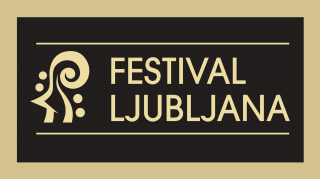Alenka Slavinec’s photomontages represent the splendid beauty of music and theatre at the Ljubljana Festival
By Ali Ameri
Subjective and surreal, an invitation to a photographic feast of energy, peace and intuition, the recent exhibition of the Slovenian photographer and artist Alenka Slavinec titled The G0lden Age of the Ljubljana Festival (2013-2022) is a visual retrospective of the festival over the last decade.
Currently on show along the Jakopič Promenade at Tivoli, the exhibition, which will run by August 15, features 80 photomontages which juxtapose and combine real and dreamlike elements based on photographs taken by Slavinec and others. These superimposed outdoor images, all 180×120 cm, were created in April and May this year to be displayed at an exhibition aimed to honour the 70th anniversary of the Ljubljana Festival.
Various musicians have been depicted in this visual feast, from prominent international figures such as Daniel Barenboim, Zubin Mehta, Hélène Grimaud, and the choreographer María Pagés, to Slovenian heavyweights such as Laibach with Milan Fras as the front man, as well as Lana Trotovšek Vlado Kreslin and others.
The same is also true of dramaturges like Livia Pandur and the choreographer Edward Clug. Furthermore, the exhibition honours the friends of the Ljubljana Festival who have played constructive roles in the history of this prominent artistic event, such as the musician and director of the festival, Darko Brlek.
What is visible in many of these compositions is the kinetic energy created by the combination of unparalleled lines, light, forms of human bodies and the arrangement of warm (yellow, orange, red) and cold (green, blue) colours. This approach is congruent with the dynamism of the musical scene intended to be depicted by the artist, as evident in the composition of Béjart Ballet Lausanne (SILIAMMM 2) and Valerij Georgiev, Mariinsky Theater Orchestra (SILIAMMM 4).
In such a play of light and colour, the characteristic visual device of Slavinec, surreal multilayered images create a sense of sequence, time and simultaneity with a strand of avant-gardism. In this context, where imagination flies higher, this collection touches upon what the artist calls the 5th dimension, the 5th element of music, the realm of intuition, all one in the harmony of infinity, the symphony, one with nature in the transformation of the elements of water, air, earth and fire.
One of the best examples of the surreal supernatural tendency in this collection is the photomontage titled Birds of a Kind (SILIAMMM 7), named after a play directed by Ivica Buljan, which features various semantic elements at the same time: the beauty of nature, passion, lust for life, and the inevitability of death, which together create a multifaceted signification, this time against a backdrop of cold colours.
However, it should also be noted that the practice of structural elements and the way Slavinec proceeds with such superimpositions sometimes seems trite and the motifs overused. Or perhaps this is inevitable when producing 80 works within just two months.
As well as studying and researching the lives and careers of the musicians and other artists shown in these images, and reading reviews of their works, Slavinec listened to their music when possible in order to grasp a better understanding and feeling of their spirit.
Photomontages date back to the 19th century. They were first produced in 1857 by the English photographer Oscar Rejlander in his work, The Two Ways of Life. Later, in the 20th century, Hannah Höch and members of Berlin Club Dada further promoted the art of photomontage, and then Germany hosted the first retrospective exhibition of photomontages in 1931.
At the same time, Russian Constructivist artists including Alexander Rodchenko began to use pioneering photomontage techniques as propaganda in the official journals of the Soviet Union. The form developed during the time of modern art and introduced photography to the realm of Surrealism. Then in the US, the Russian-American artist Val Telberg and Jerry Uelsmann played leading roles by employing several techniques that later had an impact on digital photomontage.
Earlier in 2012, Alenka Slavinec held an exhibition titled The Symphony of Plečnik which paid tribute to the prominent Slovenian architect at the 60th edition of Ljubljana Festival.
As the Iranian poetess Forough Farokhzad (1934-1966) once wrote: “It is only sound that remains”, and the photomontage exhibition The G0lden Age of the Ljubljana Festival (2013-2022) functions to visualise this immortality by rendering the language of music into images.

